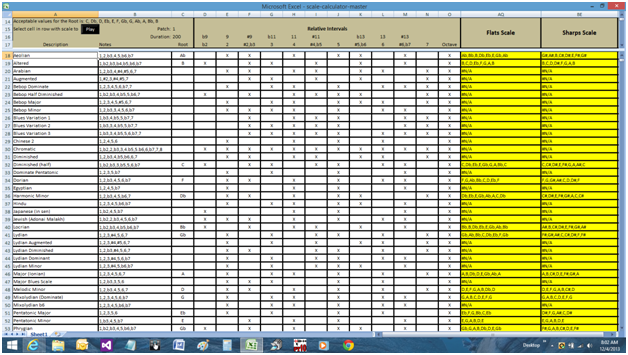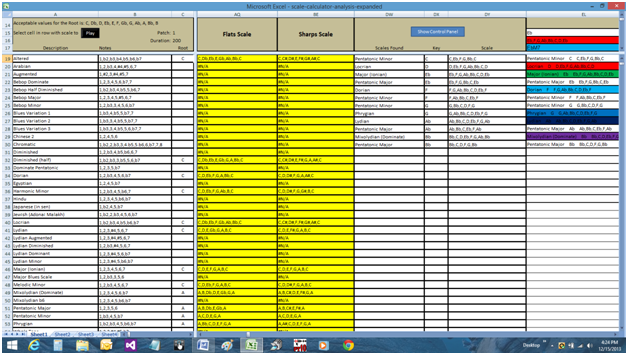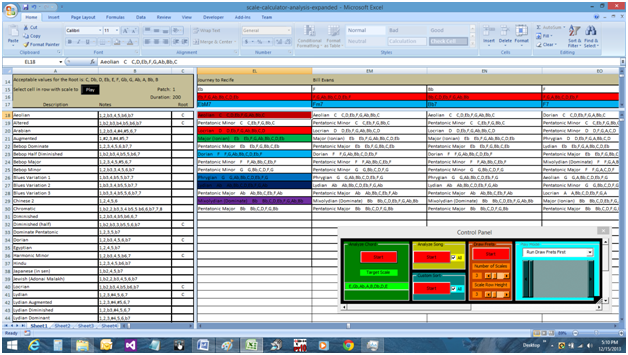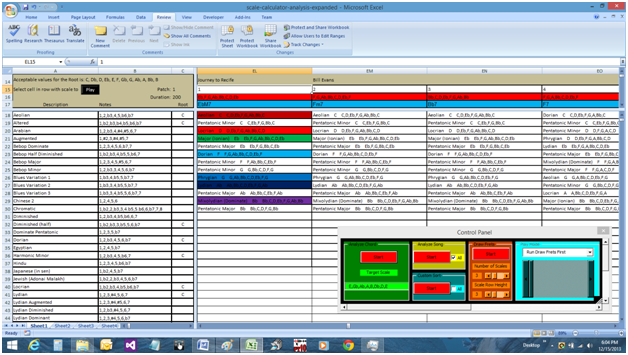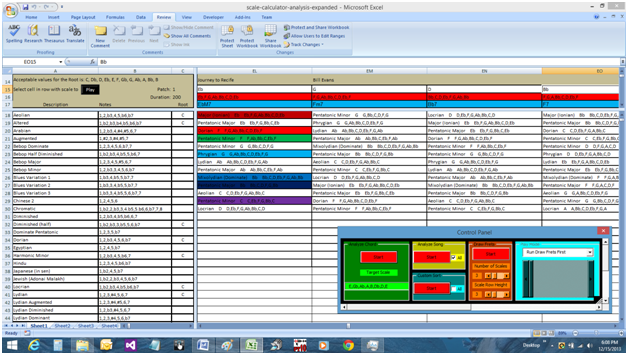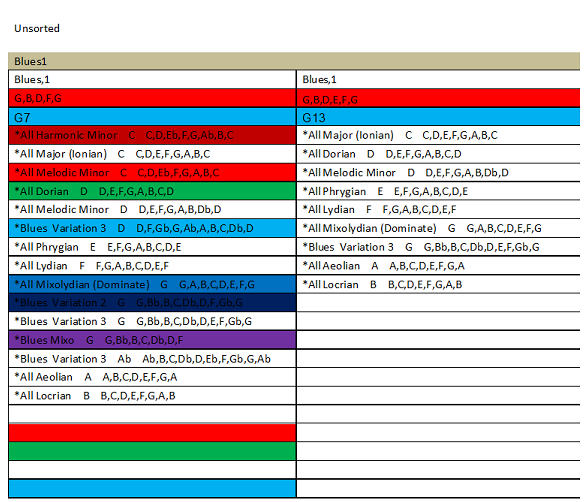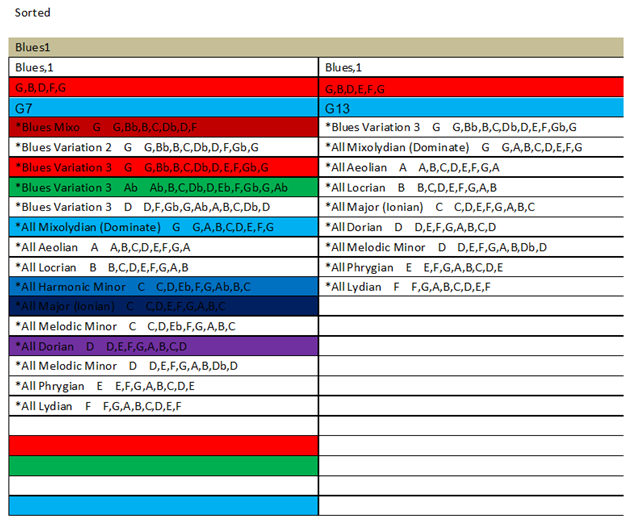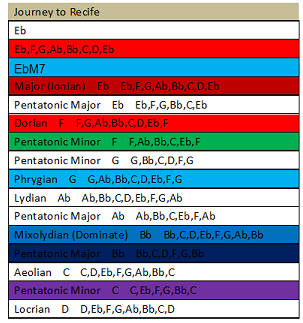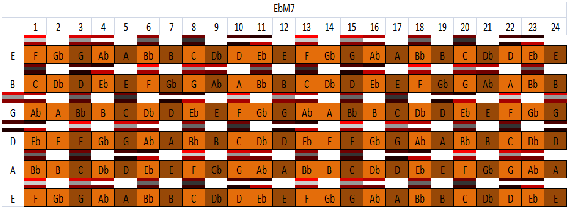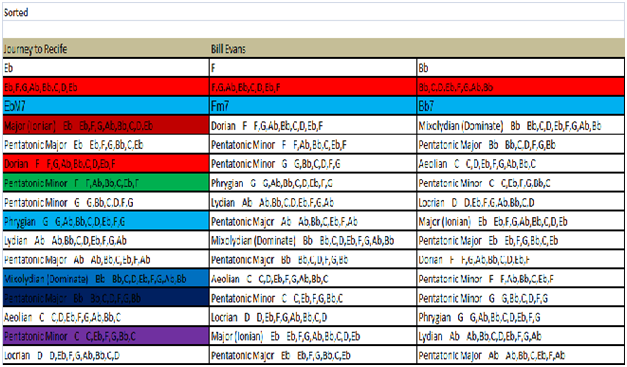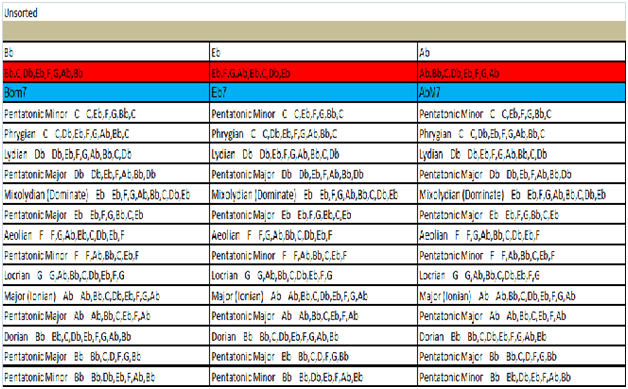(First, let me write that this is simply an exercise in what I term ‘musings’ which matters not about truth or falsity but only possibilities; possibilities flame the mind with openness and fuel the passions of many desires.)
Infinity, Descartes tells us, is an idea which overflows itself. It is one of many avenues which free the spirit as musings rooted in music lights up the mind and rouses our passions.
A point in the face of infinity is one of many particularizations of an abstraction. The face, as a boundary imposed on infinity is nevertheless an abstraction which in our case has been conjured up by a point. A point need not be finite, it may also be infinitesimally small which once again rouses the fabric from whence it is made. It demonstrates a circularity in facing us.
Physics as appearance, as what shows itself; what presents itself, utilizes the ‘point’ quite often to concretize abstractions which cannot be seen except in the presentation of another abstraction; the point as facing us in its stark abstraction.
If we make a series of points into an imaginary line and stretch the line through space, we will find that the shortest distance between two points is not a line because time is space and space is time and they are vastly curved by planets, suns, galaxies, and black holes. It makes no sense to speak of a straight line in time-space without lapsing into an imaginary fantasy world, an abstraction. Even a worm hole, if it exists, would be more like a curvy worm writhing time-space into extremely twisted distortions which could hardly be called a straight line. With this in mind let’s say our line is really a small increment on a non-linear abstraction such as a circle or a sphere. What happens when we shrink our circle into smaller and smaller loops? In a recent article called “The Origins of Space and Time” in Scientific America a stark observation is made:
“Natalie Paquette spends her time thinking about how to grow an extra dimension. Start with little circles, scattered across every point in space and time—a curlicue dimension, looped back onto itself. Then shrink those circles down, smaller and smaller, tightening the loop, until a curious transformation occurs: the dimension stops seeming tiny and instead becomes enormous, like when you realize something that looks small and nearby is actually huge and distant. “We’re shrinking a spatial direction,” Paquette says. “But when we try to shrink it past a certain point, a new, large spatial direction emerges instead.”” (Becker, 2022)
The article goes on to state that in two radically different mathematics, one of the extremely small which deals with quantum mechanics called conformal field theory (CFT) and one of the extremely large which deals with gravity called anti-de Sitter (AdS) space, can each equally describe the very large and the very small, gravity and quantum mechanics. AdS has one more dimension in it than CFT. Four dimensional CFT encodes everything in AdS, in five-dimensional space. Two nearby regions of space on the AdS side correspond to two highly entangled quantum components of CFT.
Certainly, as we have mentioned a point can simply revert back to what it always was, an infinitesimal, ideal and not real. However, physics has discovered that infinitesimally small does not rest in infinity in practice but reverts to infinitely large. At some point the singularity, the infinity point, of a black hole may result in a big bang creating time and space, binding into mass and forces of atoms (electro-magnetic, weak and strong force) and gravity which unfold from pure energy into forces which clump as densities and time-space fabrics weighed down by mass, deforming time and space with a force called gravity. In all of this we find a circularity from chaos as massless pure unbound energy, neutrally charged with no attraction or repulsion to anything, simply popping in and out of existence prior to a universe.
Additionally, researchers have note that,
“The researchers’ previous investigation into the early universe replaced the idea of a Big Bang singularity, where the universe emerged from nothing, with the Big Bounce, where the current expanding universe emerged from a super-compressed mass that was created when the universe contracted in its preceding phase. They found that all of the large-scale structures of the universe accounted for by general relativity are equally explained by inflation after this Big Bounce using equations of loop quantum cosmology.
In the new study, the researchers determined that inflation under loop quantum cosmology also resolves two of the major anomalies that appear under general relativity.
“The primordial fluctuations we are talking about occur at the incredibly small Planck scale,” said Brajesh Gupt, a postdoctoral researcher at Penn State at the time of the research and currently at the Texas Advanced Computing Center of the University of Texas at Austin. “A Planck length is about 20 orders of magnitude smaller than the radius of a proton. But corrections to inflation at this unimaginably small scale simultaneously explain two of the anomalies at the largest scales in the universe, in a cosmic tango of the very small and the very large.”” (McCormick, 2020)
Pure energy is unbound energy. It is a cacophony, chaotic and unable to clump together as atoms. Heavier atom nuclei are created in the fusion of the sun. Protons and neutrons are held together in the nucleus by the strong force and are millions of times more bonded together than electrons that are bonded to an atom, especially in the outer shells. Atoms are waves which bind to each other. The Higgs boson is a sub-atomic particle which is responsible for this harmony of wave-like bonds. The atom brings harmony to the world. Quantum mechanics comes from the word quanta which means discrete or digital as opposed to analog which has infinitesimally small ‘points’ which get ever closer together. The nuclei of atoms pull in free electrons from free ranging radiation, unbound energy such as photons and impose structure and order on them in the form of particles or bound energy. The closest cloud shell to the nucleus has a resonant frequency depending on the type of element. All the further shells are octaves of the first shell. Actually, electron particles are described mathematically as standing waves. These standing waves are harmonic octaves of energy ‘shells’ around the nuclei. When an orchestra resolves notes into octaves, we hear the sound as an agreement of sorts. Parmenides saw harmony as a balancing of opposites which gave illumination to the muses, to music. It was pleasing and created form from chaos. In physics we call this phenomenon standing waves.
Standing waves are a moment when waves combine perfectly to create their highest moment or amplitude. Instead of fighting each other the waves unite as a collectivity, a whole moment of their highest goal, culmination or perhaps, telos in Greek thought. This is the discrete octaves of quantum mechanics. The nuclei pull in chaotic radiation and photons to create an electron and an excess amount of energy which is called kinetic or in Aristotle’s terms ‘actual’ energy. The kinetic energy is spent keeping the electron in its quanta shell with angular momentum. The cool thing about an atom is the way it absorbs and radiates energy. When it is bombarded with energetic radiation, to a degree, it maintains its structural nucleus and spends and absorbs energy by binding or releasing electrons and using the energy produced in this creation to fuel its quanta shells. It is important to remember that these bounded electrons and the nuclei itself are waves. Electrons around the nucleus are more like waves in the ocean on a calm day. Atoms can maintain their nature, in Latin terms, without transitioning to another kind of nature, another kind of element. When radiation energy is too high atoms can lose or gain protons and neutrons in radioactive decay called fission or fusion. After this kind of storm of radiation atoms become something other than what they were, they transform to another element, a transposition of a musical key. Chemical bonds called molecules which make up cells are able to withstand a certain amount of abuse before they break down. This is due to the way atoms can absorb or radiate energy without changing their nature. Cells can maintain themselves with a certain amount of abuse before cancer sets in and changes their atomic nature.
What is important to understand in the previous discussion is that chaos, unbound energy, can harmonize, transform chaotic void to form. The atomic, harmonic moment is harmony in and from chaos, unbound radiation and free energy. They can also share electrons with other elements to become molecules, a symphony of octaves. String theory utilizes musical metaphors to capture how multidimensional time-space can bring sub-atomic particles into our universe. Form and order are not absolutes, they are momentary mirages in a desert of chaotic nothingness we call the universe. Form and order are not absolutes. They are a moment of a movement in the orchestration of existence. We are the audience of the music of the gods. We are serenaded by reality. It is our choice if we let the muses move us into the fleeting light or we harden our ears and become deaf to beauty, wonder and awe. Mass is the reality of a harmonic song. It is the clumping of energy into an orchestral symphony of standing waves, of harmonizing unity.
Space/time emerges from chaos. Without the clumping of wave/masses, the speed limit of light may not exist as the fabric of time-space could not emerge. For those of us in the light, we perceive sub-atomic particles of quantum mechanics chaotically existing and not existing since our universe is bound by light thrown through the prism of time-space abstractly at the speed of light in a perfect vacuum. Physics loves to isolate to see what happens to a phenomenon when it is alone and unaffected by externality. The problem is that a perfect vacuum does not exist except as an abstraction like a point. In reality, nothing exists alone, without an externality, at least in our universe. Physicists want to explore in localities. They want a compromise from a perfect vacuum to a delineated region they call a locality. They know that a locality is yet another abstraction because the universe defies localities on smaller and smaller scales. However, to greater or lesser degrees, the abstraction of localities can aid understanding. Macro phenomenon disappears into micro phenomenon which do not seem to care much about the macro and the rules of macro physics as smaller looms larger and larger. As the macro environment disappears into the micro-environment, the macro rules of physics become an abstraction. There is a radical divide between the macro and the micro. On the micro scale, we get Einstein’s, “spooky action at a distance” – entanglement. A particle is yet another abstraction like a point. Phenomena is wave-like. Waves in the ocean are created by gravity undulations. Particles focus the peaks of their waves to greater or lesser degrees. Particles can be thought as culminations or more visible, closely spaced, energy-wise, peaks. Particles are foci of energy waves. However, particles do not exist as some kind of Latin ‘substance’. What is more, these waves seem to be haunted by entanglement.
Entanglement is at the heart of quantum physics and future quantum technologies. Like other aspects of quantum science, the phenomenon of entanglement reveals itself at very tiny, subatomic scales. When two particles, such as a pair of photons or electrons, become entangled, they remain connected even when separated by vast distances. In the same way that a ballet or tango emerges from individual dancers, entanglement arises from the connection between particles. It is what scientists call an emergent property.
Entanglement can also occur among hundreds, millions, and even more particles. The phenomenon is thought to take place throughout nature, among the atoms and molecules in living species and within metals and other materials. When hundreds of particles become entangled, they still act as one unified object. Like a flock of birds, the particles become a whole entity unto itself without being in direct contact with one another. Caltech scientists focus on the study of these so-called many-body entangled systems, both to understand the fundamental physics and to create and develop new quantum technologies. As John Preskill, Caltech’s Richard P. Feynman Professor of Theoretical Physics, Allen V. C. Davis and Lenabelle Davis Leadership Chair, and director of the Institute for Quantum Information and Matter, says, “We are making investments in and betting on entanglement being one of the most important themes of 21st-century science.” (Article, What Is Entanglement and Why Is It Important?)
Entanglement is not a phenomenon of particles. In quantum mechanics it is a result of a mathematics which takes place in something called Hilbert space. Hilbert space can have infinite dimensions or a minimum of 2 dimensions (called qubits). While mathematics is certainly an abstraction, there is a physical component which would more properly be called waves than particles. Photons are commonly used to observe entanglement. Entanglement binds two waves and even networks, for the merely illustrative example of a tree given below. Entanglement occurs when the quantum wave functions collapse. Does it happen faster than the speed of light? No one knows for sure, but N. Gisin published a paper in 2001 suggesting that the wave function collapse happens somewhere between two-third the speed of light and 1.6 times the speed of light. see (H. Zbinden, 2001)
Whether it is truly instantaneous is still up for debate. However, interesting to note that identical behavior dependent on observation has no dependence on distance. Distance is space and space is time. So, it appears plausible to me that this phenomenon could be pre-emergent to time-space. As I mentioned in a previous post, the block universe tells us that the universe is static and time is emergent. The Wheeler-Dewitt equations predict this. For those of us in the universe it seems quite apparent that time has an arrow, from a past to a future. However, an external observer would see a painting rather than a symphony according to current physicists. Actually, the big bang or big bounce is an emergent theory of the universe. It describes how the three forces, strong, weak and electromagnetic forces evolved from a single force. If quantum gravity is correct, that also would be an emergent force. see (Ekaterina Moreva)
Entanglement appears to be highly volatile to certain types of noisy environments. It can have very short lifespans. It can also have sudden deaths and re-births for unknown reasons. see (A. Kowalewska-Kudlaszyk, 2010)
Entanglement may happen much more often than is commonly believed but so far it has been produced more in laboratory settings where disruptive variables can be controlled. Entanglement appears to defy time-space causal relations. However, the tale of entanglement is much more bizarre than that as this analogy tries to illustrate:
Suppose we have two entangled trees.
From one angle we can see the tree has three branches.
From another angle we can see the tree has four branches.
The entangled trees are on opposite sides of the universe, and no one is looking at them (the quantum wave function has not collapsed which means the trees have both three branches and four branches).
An observer is posted on each side of the universe to watch the trees.
One observer sees the tree has three branches.
Now, the other observer looks at the tree from the same angle as the first observer (the quantum wave function has collapsed).
Both observers see the tree has three branches.
Now, the second observer changes their angle, so the second observer sees four branches (the quantum wave function has not collapsed).
The first observer now has a 50% chance of seeing three branches and a 50% chance of seeing four branches.
However, if the first observer changes their angle of perception to match the second observer’s angle, both observers will see four branches (the quantum wave function has collapsed).
In some mysterious way the connection between the two is dependent on perception. This phenomenon is called uncertainty in quantum physics. Somehow what is entangled involves perception on the part of the observer and memory in the entangled objects. In this way, entanglement embodies memory. This is how quantum computers may be the future of artificial intelligence. Entanglement has been proven to absolutely defy locality. Einstein pushed the idea of locality so far as to hypothesize hidden, perhaps multi-dimensional variables, which were later conclusively disproven. Entangled particles could possibly occur all the time, whenever particle/wave collisions occur creating new particles and new anti-particles.
Entanglement lies at the heart of quantum mechanics, and in recent years has been identified as an essential resource for quantum information processing and computation. The experimentally challenging production of highly entangled multi-particle states is therefore important for investigating both fundamental physics and practical applications. Here we report the creation of highly entangled states of neutral atoms trapped in the periodic potential of an optical lattice. Controlled collisions between individual neighbouring atoms are used to realize an array of quantum gates, with massively parallel operation. We observe a coherent entangling-disentangling evolution in the many-body system, depending on the phase shift acquired during the collision between neighbouring atoms. Such dynamics are indicative of highly entangled many-body states; moreover, these are formed in a single operational step, independent of the size of the system. (Mandel, et al., 2003)
Under certain conditions entangled particles demonstrate non-causal relationships. This alone seriously jeopardizes the metaphysics of a mechanical universe which was prevalent in the 19th century. Physics and philosophy after this period have taken seriously the implications of a non-deterministic universe.
Could it be that everything that has ever happened in the universe from the infinitesimally small to infinitely large has been copied and retained by entanglement? That would be quite a leap from what we know now. However, if entangled particles can survive, the question of where the wandering entangled particle goes when it is created may not be absurd? If entanglement is pre-emergent of time-space, this would imply that entanglement is much more important to the emergence of time-space. And, since entanglement has two fundamental components: the observer and memory, it may be that information is not created and destroyed with the big bang and the heat death of the universe. Some believe, we may exist in a black hole. Could it be that information, even observation and memory, is stored on the boundary, the event horizon of the black hole in the form of ‘hairs’? Physicists have analogized this information as ‘hairs’ on the event horizon of the black hole. Could this be the face of our universe? Others, think of this information as a two-dimensional hologram on the surface of the universe. Could it be that everything that has ever happened, including reactions from our brain neurons to galaxies and worlds has been retained as memory somewhere such that no information is lost by the universe?
In this case, the memory of the universe is the score of the symphony. A score is static as a painting but why keep a score if there is no repeat performance? Form as the Greeks thought it has been meticulously recorded so that perhaps it will yet find another performance. There may be a reason the universe remembers but perhaps we will not be in the audience next time it is performed. Or perhaps, we will become better listeners next time. In any case, we certainly see a circularity in whatever reality is, not only in terms of creation and destruction, large and small, wave and particle but also in terms of temperature. We have the tendency to think in terms of linearity which inevitably brings on such questions as, what is outside the edge, the face of the universe? What is after this life? What was before the big bang? Linearity has evolved into metaphysics – the haunting question of how is nothing possible? If nothingness is impossible there must be a God. If nothingness is possible, it must be regardless of its perceived impossibility. All of these questions are spawned by the foreboding question of nothingness pro and con. Is nothingness spawned by the perception of linearity?
Linearity is the standing wave of our existence. It is the moment when the universe gathers itself, rouses itself, from the slumber of chaos and declares, “I am that I am” or tat tvam asi (Buddhism: thou art that; the union of Atman (individual, self, soul) and Brahman (universal consciousness, Absolute) as plurality/one, wave/particle uncertainty(?)…). Whatever we call reality, it is not an unchanging permeance otherwise it would be mechanical, the dead metaphysics of mechanism. The beauty of existence is the standing moment of harmony and unity which does not have to be, given the wave nature of reality arising out of pure energy, chaotic energy and yet, nevertheless, is. So, what about temperature? How is temperature non-linear in this sense? We think absolute zero Kelvin is the end of the temperature scale and some unknown large temperature is the high end of temperature. What if that is also circular?
A new study finds that there is a ‘negative’ to absolute zero Kelvin. Temperature is not fundamentally a measure of cold and hot, but it is really a measure of less or more active energy. While energy does have a zero point we think as absolute zero, the study shows that this is not the end of the story. At absolute zero all motion freezes, it stops – just as at the speed of light nothing can change, grow old and die, since time stops. The study shows that in a laboratory situation when temperature is zero and energy is motionless, change is possible in the ‘negative Kelvin direction’. The team pushed further in a highly controlled laboratory experiment to show results of high energetic activity after crossing the Kelvin zero point into the ‘negative’ domain. In our universe, we started out with a high level of pure energy in the big bang. However, with entropy, that higher level of energy gets ‘colder and colder’, more and more entropy, and the energy clumping level goes down until, in the heat death of the universe, the universe reaches absolute zero in which no change can occur. At this point there is no change just as when time stops at the speed of light. What the new experiment showed is that when pushed past zero into ‘negativity’ we get an immediate burst of high energy. As we push further into negativity the energy calms down.
“On the absolute temperature scale, which is used by physicists and is also called the Kelvin scale, it is not possible to go below zero – at least not in the sense of getting colder than zero kelvin. According to the physical meaning of temperature, the temperature of a gas is determined by the chaotic movement of its particles – the colder the gas, the slower the particles. At zero kelvin (minus 273 degrees Celsius) the particles stop moving and all disorder disappears. Thus, nothing can be colder than absolute zero on the Kelvin scale. Physicists have now created an atomic gas in the laboratory that nonetheless has negative Kelvin values. These negative absolute temperatures have several apparently absurd consequences: although the atoms in the gas attract each other and give rise to a negative pressure, the gas does not collapse – a behavior that is also postulated for dark energy in cosmology.
According to the physical meaning of temperature, the temperature of a gas is determined by the chaotic movement of its particles – the colder the gas, the slower the particles. At zero kelvin (minus 273 degrees Celsius) the particles stop moving and all disorder disappears. Thus, nothing can be colder than absolute zero on the Kelvin scale. Physicists at the Ludwig-Maximilians University Munich and the Max Planck Institute of Quantum Optics in Garching have now created an atomic gas in the laboratory that nonetheless has negative Kelvin values. These negative absolute temperatures have several apparently absurd consequences: although the atoms in the gas attract each other and give rise to a negative pressure, the gas does not collapse – a behaviour that is also postulated for dark energy in cosmology. Supposedly impossible heat engines such as a combustion engine with a thermodynamic efficiency of over 100% can also be realised with the help of negative absolute temperatures.
“The inverted Boltzmann distribution is the hallmark of negative absolute temperature; and this is what we have achieved,” says Ulrich Schneider. “Yet the gas is not colder than zero kelvin, but hotter,” as the physicist explains: “It is even hotter than at any positive temperature – the temperature scale simply does not end at infinity, but jumps to negative values instead.”
The achievement of the Munich physicists could additionally be interesting for cosmology, since the thermodynamic behaviour of negative temperature exhibits parallels to so-called dark energy. Cosmologists postulate dark energy as the elusive force that accelerates the expansion of the universe, although the cosmos should in fact contract because of the gravitational attraction between all masses. There is a similar phenomenon in the atomic cloud in the Munich laboratory: the experiment relies upon the fact that the atoms in the gas do not repel each other as in a usual gas, but instead interact attractively. This means that the atoms exert a negative instead of a positive pressure. As a consequence, the atom cloud wants to contract and should really collapse – just as would be expected for the universe under the effect of gravity. But because of its negative temperature this does not happen. The gas is saved from collapse just like the universe.” (S. Braun, 2013)
Doesn’t this remind us intuitively of anti-particles, dark matter, dark energy and even the singularity, the zero point of a black hole? We know that the universe is expanding and will eventually result in the heat death of the universe but is heat death the end like absolute zero? What happens when energy is frozen and motionless? Does it linearly stay that way forever? That would be impossible since time, or change, is no more as we also think occurs at the speed of light, how can we call that zero point an instant, a moment of time, since time-space is no more?
What is more, in 2005 a study was published, “Influence of quantum entanglement on quantum tunnelling between two atomic Bose-Einstein condensates [rapid communication]” (Zeng & Kuang, 2005), which showed that close to zero degrees Kelvin atoms are in a highly coherent state. This means they are stable, and all occupy the same position in space. When they separated these atoms into two clouds, they found that the two clouds were entangled and remained entangled. This generated much excitement from quantum computing research.
Quantum tunneling is essential to fusion. It is an odd phenomenon that allows electrons to move through potential energy barriers which would normally offer a high degree of difficulty for the electron waves to penetrate. It is based on the quantum wave function which, like the tree branch example, utilizes uncertainty to perform a totally different kind of computation than our current digital technology allows. Our brains work like quantum computers. We can recognize images and make associations faster because we can deal with probabilities without have to perform very complex matrix operations in a more serial, linear, operation which can only use zeros and ones. Quantum computing allows much faster computational rates than our current computers. This is because the technology is much smaller than our current computing technology. It is also able to perform calculations in multi-dimensional, matrix operations. The matrix operations are highly scalable so more complex matrixes simply use more qubits. A qubit is a quantum bit. It can be in a state of 0 or 1 or both 0 and 1, like the tree branch example. This allows it to compute complex probability equations much faster using quantum transistors.
When researchers were able to couple quantum tunnelling with quantum entanglement at near zero degrees Kelvin, they found that this increased the possibilities for quantum computing exponentially from mere quantum tunneling. Article, (A quantum entanglement between two physically separated ultra-cold atomic clouds, 2018) If true, artificial intelligence is possible, it would have to be based on this technology. I was a skeptic for a long time because it seemed that for a time, artificial intelligence was really a marketing spin on expert systems. However, with quantum computing we are most likely employing the same ‘technology’ that our brains use AND that technology has the capacity to far out ‘think’ our brains. See (Article, What is a qubit?), (Article, Quantum tunnelling), (Article, What Is Entanglement and Why Is It Important?)
If intelligence is endemic to the universe as I believe, then, while it burns my fingers to type this, could it be that close to plus zero degrees Kelvin we have some indication that there is a capacity for a ‘brain’ that would make our brains look like a piece of wood? Okay, I know that sounds nutty, and likely is nutty, but not as nutty as certain politics these days (equivocations for fun). However, why have an ultra-mega-supercomputer if it is not used? While some may call this the mind of God. I would simply say that it is mind or as Plato would say, the form of which we only perceive shadows. However, these shadows are not copies of some absolute. They/we participate in the first moments (which are not anything like our time-space moments) of creation and destruction just as entanglement, likely is pre-emergent from, and gives rise to, time-space. My only redemption in thinking this is that, unlike a new-ager, I have no problem being wrong as I am merely musing.
We know that pure energy has massless, and even neutrally charged moments of pure, unbound energy in which sub-atomic, particle/waves pop in and out of existence, perhaps below and above the speed limit of light or somehow still ‘are’ that zero point where time-space has not yet emerged. Is this how we can see such artifacts of pre-emergent time/space as entanglement? I think of Shunyata in Buddhism which has been translated as emptiness, but I think of it more as Aperion in classic Greek which is more closely translated as the fertile void. There is nothing to constrain pure energy to be in this universe. Additionally, we know there are darker and colder spots in the current universe from the background heat radiation of the big bang, perhaps the fingerprint of God? Could these dark spots indicate the transition from absolute zero to negative Kelvin still at work in our universe? – before the fabric of space and time, pre-light, when light was anti-light, matter was anti-matter, energy was dark, mass was dark. Is our universe still a composite of this pre-time and its other? Could it be that when a black hole breaks reality down into a singularity it reaches a zero point where nothing is bound, nothing can move, time cannot exist and, therefore, -we can relieve ourselves of the impossible idea that more and more stuff can be crammed into nothingness and still retaining its linear, ‘stuff-ness’. Perhaps a black hole is the transition from,
stuff => no-stuff => anti-stuff => repeat
or from,
universe => heat death of the universe => zero point => immense stuff => repeat
in the opening moments of another big bang. In this case, creation and destruction are bookmarked by zero points where negative Kelvin, the speed of light, marks the transition from,
universe of high energy dying in entropy => the nothingness of zero, motionless, changeless, timeless => high energy, anti-universe (noteworthy that anti-universe would be indistinguishable from our universe or universes) => anti-entropy, increasingly lower energy => once again the zero point => beginning all over again.
If the speed of light is the limit of time and zero degrees Kelvin is the limit of space, then time-space is emergent from this limit. The limit is both the end and the beginning of time-space. Additionally, traces of another time-space an anti-time-space are still with us as dark energy, dark matter, anti-matter.
Could it be <time-space> and <speed of light-zero degrees Kelvin> are cousins of someone who plays dice with the universe?
All of this is shrouded in the wave of uncertainty and anti-matter. Anti-particles are created every time a particle is created. Anti-matter has been created ever since the big bang. Anti-matter annihilates matter but due the Higgs boson matter wins out in our universe. Could it be the opposite in the anti-universe?
The energy of the Big Bang can be converted into particles with mass, via E = mc². However, this conversion happens only in a particular way: every time a particle of matter is created, along with it an associated particle of anti-matter must also be created. That is, when an electron is created from energy, an anti-electron (positron) is also created; when a proton is created, so is an anti-proton, and so on. Each anti-particle has exactly the same properties as its ordinary matter counterpart: exactly the same mass, the same size of electric charge (but of opposite sign). To turn mass back into energy, one matter and an equivalent antimatter particle must annihilate each other. (Article, Prof. David DeMille awarded Cottrell Plus SEED award, 2021)
In physics, the Copenhagen interpretation of physics tells us that uncertainty is a real as anything else we call reality. It agrees that uncertainty is reality. It also agrees that the looming questions of anti-reality and uncertainty, should be ignored in so far as it does not produce any real results.
So, pragmatism should win out over unanswerable questions. Yet, uncertainty is the basis of quantum mechanics. Quantum mechanics makes probability guesses about energies and wave/particles. It does so highly accurately which is why we talk about technology, computers and quantum computers (the next evolution of computers). However, what the Copenhagen agreement agrees to ignore might be exactly why we cannot reconcile the macro and the micro, gravity and the three forces (strong force, weak force, electromagnetic force). Are we still looking for a linear-like mechanism, a ‘pragmatism of uncertainty’ (oxymoron or Zen Koan) which cannot be found in nature or mathematics? Uncertainty is real and usable in physics to a high degree, but the implications may go much further than practicality will allow. Pure energy as motionless, timeless, changeless, the architype of zero, is but a moment when moments are impossible so we call that eternity; may as well ‘be’ – if ‘be’ here is thought for lack of better word. I see this as a type of nexus where philosophy and physics need to come back together to complete themselves in a way which cannot be accomplished separately, linearly/mechanically/causally/deterministically/absolutely. The two are at least on speaking terms after the great divorce of the Royal Society and the transmutation of alchemy. Further back still we have the possibilities all laid out in astonishing detail from the pre-Socratics of Anaximander and Heraclitus to Parmenides who is told by the goddess:
TRUTH
Come, I shall tell you, and do you listen and convey the story,
What routes of inquiry alone there are for thinking:
The one- that (it) is, and that (it) cannot be,
Is the path of Persuasion (for it attends upon truth);
The other- that (it) is not and that (it) needs must not be,
That I point out to you to be a path wholly unlearnable,
For you could not know what-is-not (for that is not feasible),
Nor could you point it out. (areopagite, 202)
If the universe requires observers, listeners of the muses, we must not think that this means Homo sapiens. Beauty, wonder and awe can lapse into mechanics, mere causality and determinism. In this case, the death of music has become the static death of possibility. All is mere repetition, simulacra and simulation. If we choose the path of appreciative observation, do we end as Aristotle did in Nicomachean Ethics and the later revised Eudemian Ethics? -On happiness and virtue? Would this be the telos, the culmination of a life well lived? – the best observer and participatory engagement with the universal muses? Mechanics speaks of self-engagement. Mechanics does not require an other to itself. It merely needs to fulfill its cog-like function. Externality is abandoned in favor of isolated function. Does the universe spring forth the other as a face to be recognized? Is recognition purely pragmatic where any excess is mere interaction as language games, is accounted for as superfluous, mere whim, simply an all too human fabrication? If so, why is there something rather than nothing? A cog in a machine needs to know nothing, it simply functions until it doesn’t. Does the universe bring forth form and order from chaos so it cannot be recognized beyond function? Why do we reflect and observe infinites and uncertainties which astound and confound us? How far can we let the face of the other be more than ships passing in the night, quarks popping in and out of existence? Is recognition and participation as a possibility built into the universe, into the other, which sparks and invites recognition, responsibility and ethics? I will explore these topics in a later post.
References
A.Kowalewska-Kudlaszyk, W. L. (2010). Sudden death of entanglement and its rebirth in a system of two nonlinear oscillators. Physica Scripta, 2010, 014051. Retrieved from https://www.semanticscholar.org/paper/Sudden-death-of-entanglement-and-its-rebirth-in-a-Kowalewska-Kudlaszyk-Leo%C5%84ski/c3ce044260abfa80d3d4288abb75ba6e58b45f83
areopagite, a. d. (202, November 18). Commentary on Parmenides’s On Nature. Retrieved from https://dionysiosareopagite.substack.com/p/commentary-on-parmenidess-on-nature
Article. (2018, May 16). A quantum entanglement between two physically separated ultra-cold atomic clouds. University of the Basque Country. Retrieved from https://www.sciencedaily.com/releases/2018/05/180516102307.htm
Article. (2021, September 16). Prof. David DeMille awarded Cottrell Plus SEED award. Retrieved from https://physicalsciences.uchicago.edu/news/article/prof-david-demille-awarded-cottrell-plus-seed-award/#:~:text=However%2C%20this%20conversion%20happens%20only%20in%20a%20particular,created%2C%20so%20is%20an%20anti-proton%2C%20and%20so%20on.
Article. (n.d.). Quantum tunnelling. Retrieved from https://en.wikipedia.org/wiki/Quantum_tunnelling#:~:text=A%20European%20research%20project%20demonstrated,by%20up%20to%20100%C3%97.
Article. (n.d.). What is a qubit? Retrieved from https://www.quantum-inspire.com/kbase/what-is-a-qubit/
Article. (n.d.). What Is Entanglement and Why Is It Important? Retrieved from https://scienceexchange.caltech.edu/topics/quantum-science-explained/entanglement
Becker, A. (2022, February). What Is Spacetime Really Made Of? SCIENTIFIC AMERICAN. Retrieved from https://www.scientificamerican.com/article/what-is-spacetime-really-made-of/
Does quantum entanglement allow information to travel faster than light? (2011, June 21). Retrieved from https://www.physicsforums.com/threads/does-quantum-entanglement-allow-information-to-travel-faster-than-light.508536/page-4
Ekaterina Moreva, G. B. (n.d.). Time from quantum entanglement: an experimental illustration. Journal of Physics(Phys. Rev. A 89, 052122 (2014)). Retrieved from https://arxiv.org/abs/1310.4691
H. Zbinden, J. B. (2001). Experimental Test of Relativistic Quantum State Collapse with Moving Reference Frames. Journal of Physics A, 34(35). Retrieved from https://arxiv.org/abs/quant-ph/0002031
Hajjar, A. J. (2021, April 11). Quantum Entanglement: What it is & Why it is important in 2022. Quantum Computing. Retrieved from https://research.aimultiple.com/quantum-computing-entanglement/
Mandel, O., Greiner, M., Widera, A., Rom, T., Hänsch, T. W., & Bloch, I. (2003, October). Controlled collisions for multi-particle entanglement of optically trapped atoms. Retrieved from https://ui.adsabs.harvard.edu/abs/2003Natur.425..937M/abstract
McCormick, G. (2020, July 29). Cosmic tango between the very small and the very large. Retrieved from https://science.psu.edu/news/Ashtekar7-2020
S. Braun, J. P. (2013). Negative Absolute Temperature for Motional Degrees of Freedom. 339 (6115): 52 DOI: 10.1126/science.1227831. Retrieved from https://www.sciencedaily.com/releases/2013/01/130104143516.htm
Zeng, A.-H., & Kuang, L.-M. (2005, May). Influence of quantum entanglement on quantum tunnelling between two atomic Bose-Einstein condensates [rapid communication]. Physics Letters A, Volume 338(Issue 3-5), p. 323-331. doi:10.1016/j.physleta.2005.03.002. Retrieved from https://ui.adsabs.harvard.edu/abs/2005PhLA..338..323Z/abstract
